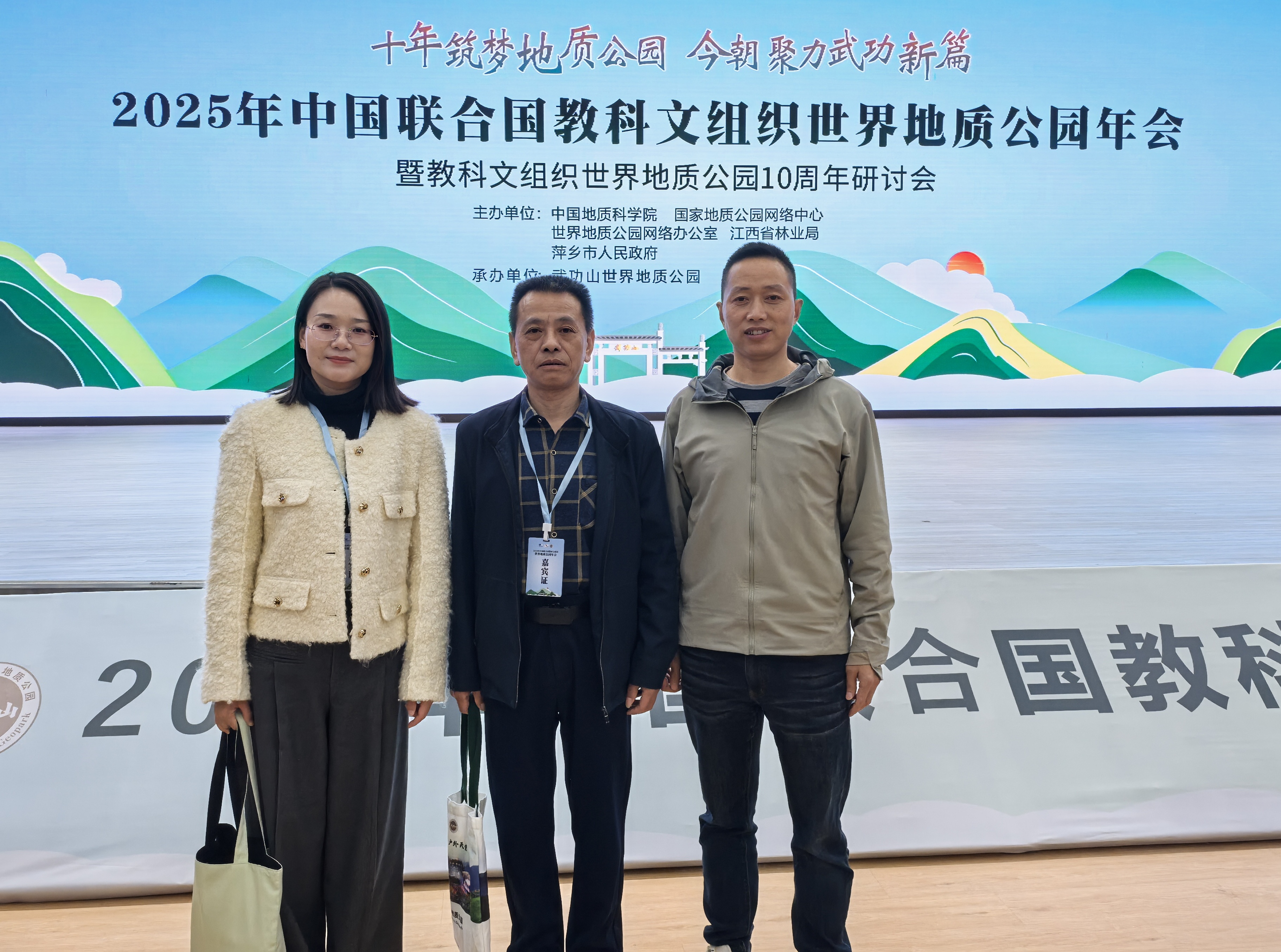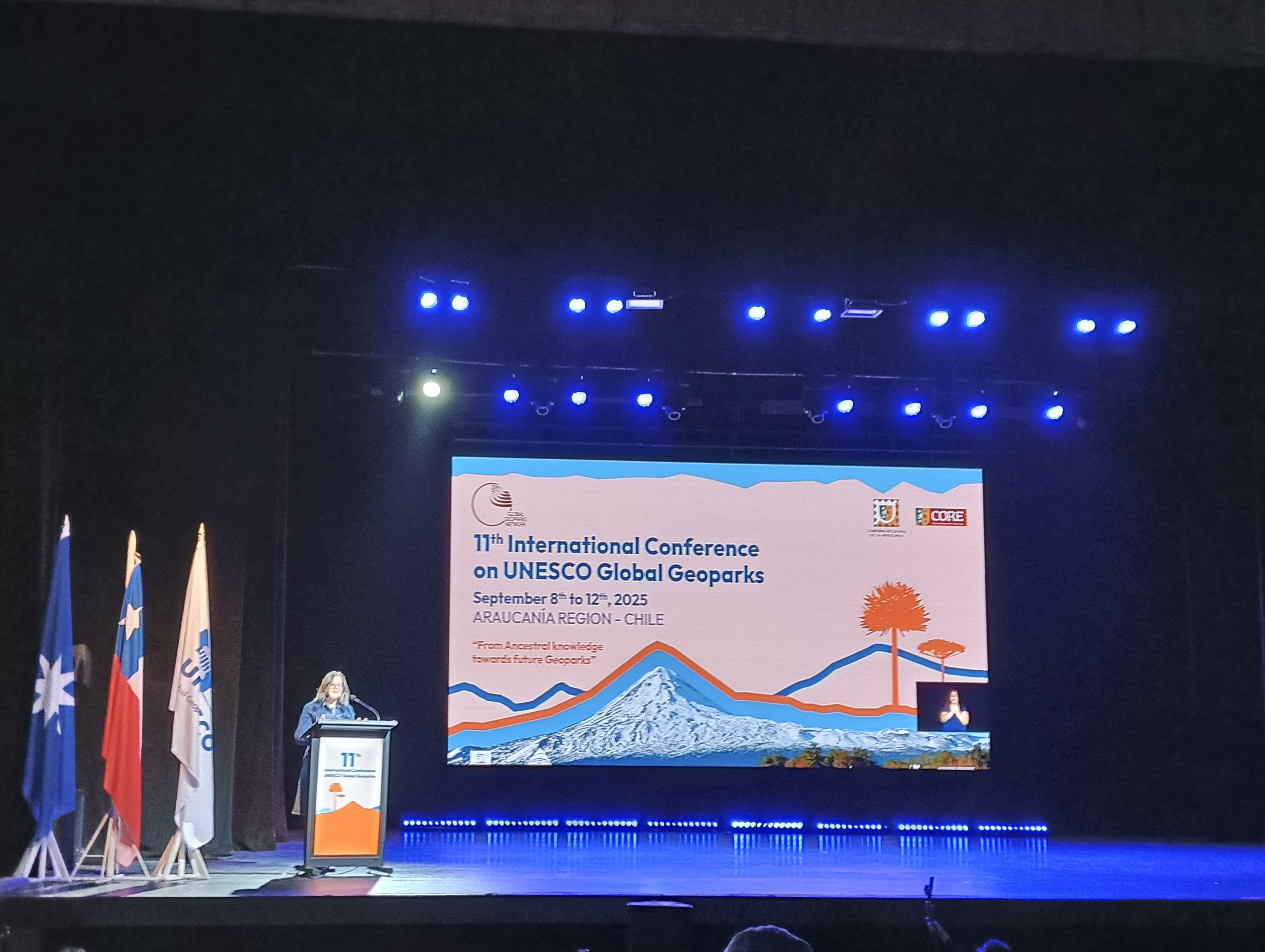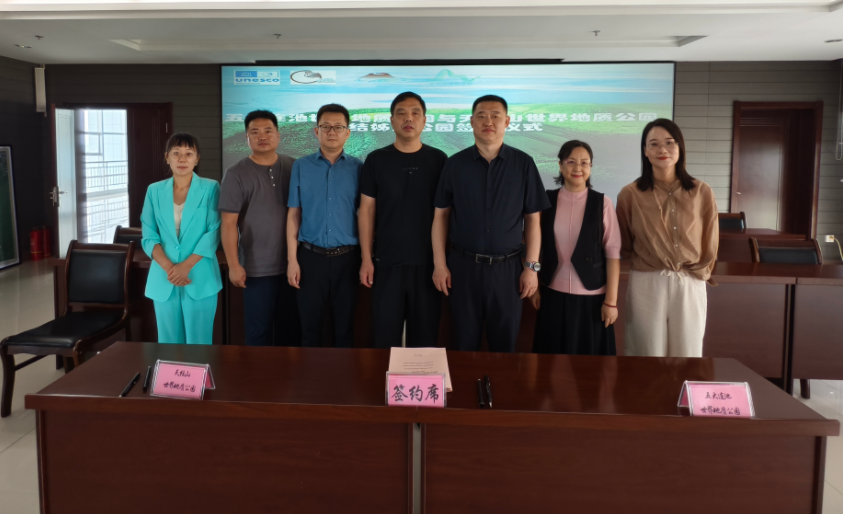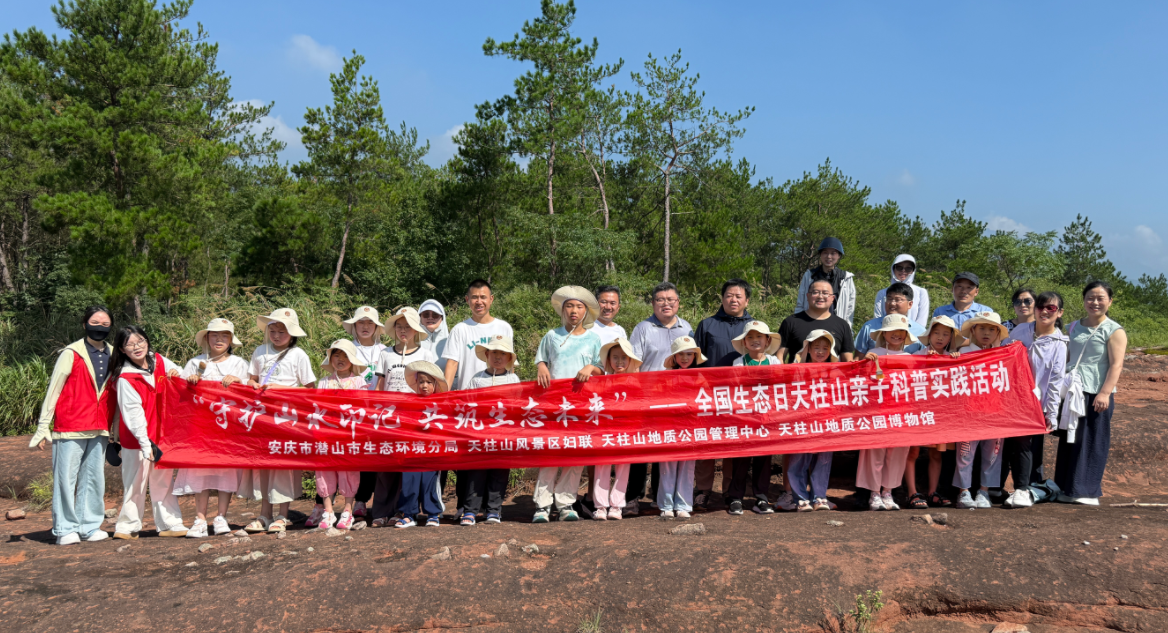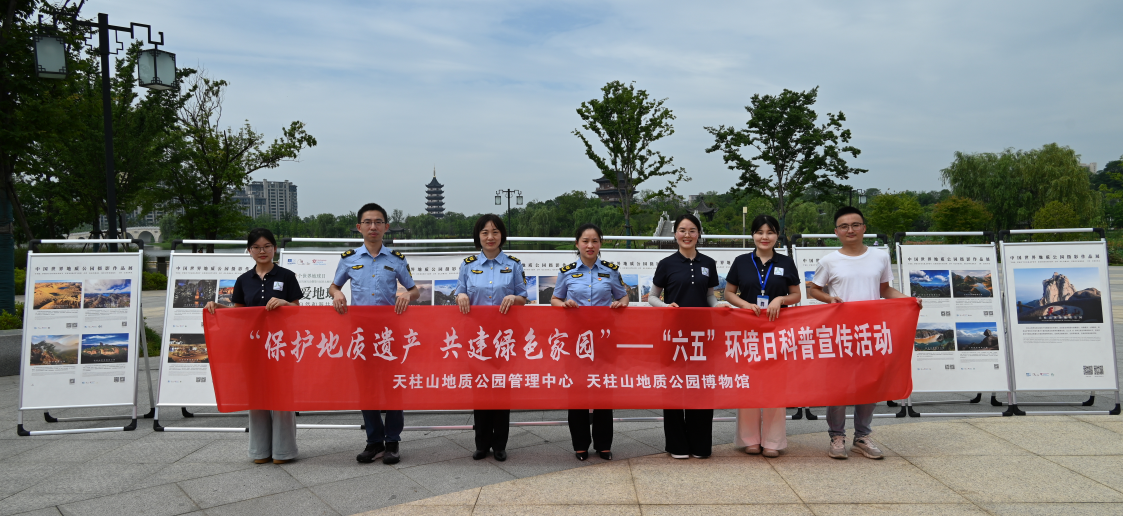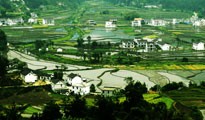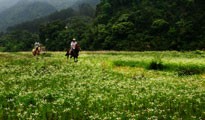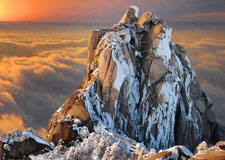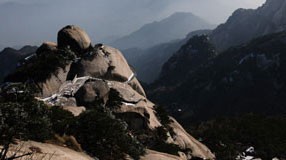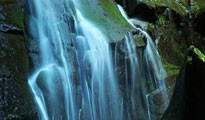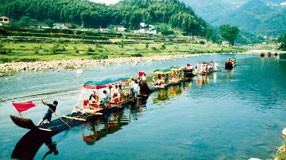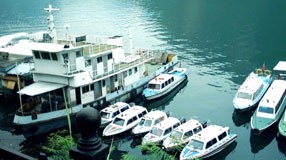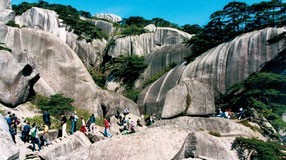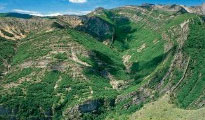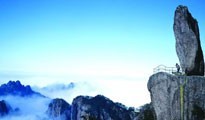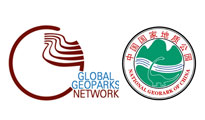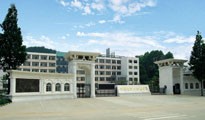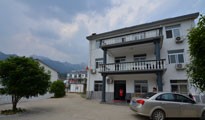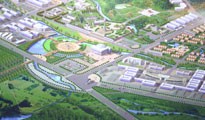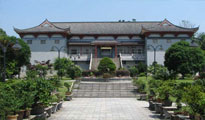
- Huangshan UNESCO Global Geopark
- Naturtejo UNESCO Global Geopark, Portugal
- Central Catalonia UNESCO Global Geopark, Spain
- Jiuhuashan UNESCO Global Geopark
- Yandangshan UNESCO Global Geopark
- Sanqingshan UNESCO Global Geopark
- Longhushan UNESCO Global Geopark
- Terra Vita UNESCO Global Geopark, Germany
- Huanggang Dabieshan UNESCO Global Geopark
- Fangshan UNESCO Global Geopark
- English Riviera UNESCO Global Geopark
- Guangwushan-Nuoshuihe UNESCO Global Geopark
- Zhijingdong Cave UNESCO Global Geopark
- Dali-Cangshan UNESCO Global Geopark
- Xiangxi UNESCO Global Geopark
- Yuntaishan UNESCO Global Geopark
- Linxia UNESCO Global Geopark
- Kanbula UNESCO Global Geopark
- Wudalianchi UNESCO Global Geopark
- Changbaishan UNESCO Global Geopark
Guidelines and Criteria for National Geoparks seeking UNESCO's assistance to join the Global Geoparks Network (GGN)
Pubdate:7/6/2015 MondayCategory:Chinese Global Geoparks Network
Introduction
Geology and landscape have profoundly influenced society, civilization, and the cultural diversity of our planet. Although the World Heritage Convention does recognize geological sites of universal value there is no system of international recognition of geological heritage sites of national or regional importance. Many important geological sites do not fulfil the criteria for inscription on the World Heritage List. The initiative of UNESCO to support Geoparks responds to the strong need expressed by numerous countries for an international framework to conserve and enhance the value of the Earth’s heritage, its landscapes and geological formations, which are key witnesses to the history of our planet.
Pursuant with the decision of its Executive Board in June 2001 (161 EX/Decisions, 3.3.1) UNESCO has been invited "to support ad hoc efforts with Member States as appropriate" to promote territories or natural parks having special geological features. National Geopark initiatives, which seek UNESCO's assistance, should integrate the preservation of significant examples of geological heritage in a strategy for regional sustainable socio-economic and cultural development, safeguarding the environment.
The present document provides guidelines for developing National Geoparks under the assistance of UNESCO for the inclusion in the Global Network of National Geoparks - generally referred to as the Global Geoparks Network (GGN). The guidelines include criteria which aspiring Geoparks adhere to through their voluntary participation in the GGN. Applicants for membership of the GGN should respect the terms of the present guidelines. UNESCO and supporting independent expert advisory groups will refer to these guidelines when assessing proposal applications for membership of the GGN.
The protection and sustainable development of geological heritage and geodiversity through Geoparks initiatives contributes to the objectives of Agenda 21, the Agenda of Science for Environment and Development into the twenty-first century adopted by the United Nations Conference on Environment and Development (UNCED, Rio de Janeiro, 1992) and which was reconfirmed by the World Summit on Sustainable Development 2002 in Johannesburg. The Geoparks initiative adds a new dimension to the 1972 Convention concerning the Protection of the World Cultural and Natural Heritage by highlighting the potential for interaction between socio-economic and cultural development and conservation of the natural environment.
The GGN operates in close synergy with the World Heritage Convention, the Man and the Biosphere (MAB) World Network of Biosphere Reserves, and with national, international, non- governmental organizations and initiatives active in geological heritage conservation. For national Geoparks in Europe, UNESCO has established a partnership with the European Geoparks Network (EGN) in 2001. As a result, the EGN coordinates membership of the Global Geoparks Network within Europe. UNESCO recommends the creation of related regional Networks, reflecting local conditions, elsewhere in the world. Networking among Geoparks is an important component of the GGN. UNESCO encourages many forms of cooperation, especially in the fields of education, management, tourism, sustainable development, and regional planning among GGN members.
3
Part I - Criteria
1. Size and setting
- A Geopark seeking to become a member of the GGN is an area with clearly defined boundaries and a large enough area for it to serve local economic and cultural development (particularly through tourism). Each Geopark should display though a range of sites of international, regional and/or national importance, a region’s geological history, and the events and processes that formed it. The sites may be important from the point of view of science, rarity, education and/or aesthetics.
- A Geopark is a geographical area where geological heritage sites are part of a holistic concept of protection, education and sustainable development. The Geopark should take into account the whole geographical setting of the region, and shall not solely include sites of geological significance. The synergy between geodiversity, biodiversity and culture, in addition to both tangible and non-tangible heritage are such that non- geological themes must be highlighted as an integral part of each Geopark, especially when their importance in relation to landscape and geology can be demonstrated to the visitors. For this reason, it is necessary to also include and highlight sites of ecological, archaeological, historical and cultural value within each Geopark. In many societies, natural, cultural and social history are inextricably linked and cannot be separated.
- If the area of a Geopark is identical to, or partly or wholly overlaps with an area already inscribed, (for example, on the World Heritage List or registered as a Biosphere Reserve of the Man and the Biosphere Programme of UNESCO) it is necessary to obtain prior clearance from the appropriate national bodies of the said initiatives in their Member State before submitting the application. Geoparks may be located on the territory of more than one country.
2. Management and local involvement
- A prerequisite to any Geopark proposal being approved is the establishment of an effective management system and programme of implementation. The presence of impressive and internationally significant geological outcrops alone is not sufficient to be a Geopark. Where appropriate, the geological and non-geological features inside the Geopark area must be accessible to visitors, linked to one another and safeguarded though a clear responsible management body or partnership that has demonstrable local support. The management body or partnership should have an effective management infrastructure, adequate qualified personnel, and sustainable financial support.
- The establishment of a Geopark should be based on strong community support and local involvement, developed though a “bottom-up” process. It should demonstrate strong support from local political and community leaders, including in relation to the provision of necessary financial resources. The Geopark should have effective and professional management structures, deliver policy and action for sustainable regional socio-economic and cultural development across the territory where it is located. Success can only be achieved through strong local involvement. The initiative to create a Geopark must therefore come from local communities/authorities with a strong commitment to developing and implementing a management plan that meets the community and economic needs of the local population whilst protecting the landscape in which they live. With a view to fully inform Member States on requests for ad hoc support to UNESCO, it is necessary that in the planning stage the aspiring Geopark keeps the National Commission for UNESCO, and the relevant appropriate governmental authorities linked to UNESCO, briefed on all planned Geopark nominations in the country/countries concerned. Parallel to this the UNESCO Secretariat will systematically inform the embassies and/or Permanent Delegations to UNESCO of the requests from national Geoparks for UNESCO support.
- A Geopark shall involve public authorities, local communities, private interests, and both research and educational bodies, in the design and running of the Geopark and its regional economic and cultural development plan and activities. This co-operation shall stimulate discussion and encourage partnerships between the different groups having a
4
vested interest in the area and motivate and mobilise local authorities and the local population.
- The identity of a Geopark must be clearly visible for visitors. This should be achieved through a strong presentation and communication strategy including consistent branding of the sites within the Geopark, in all the publications and all activities related to it.
- Sustainable tourism and other economic activities within a Geopark can only be successful if carried out in cooperation with local communities. Tourism activities have to be specially conceived to match local conditions and the natural and cultural character of a territory and must fully respect the traditions of the local populace. Demonstrable respect, encouragement and protection of local cultural values, is a crucial part of the sustainable development effort. In many regions and countries it is vital to involve the indigenous population in the establishment of a Geopark.
- It is essential to seek advice from the Geoparks Secretariat at UNESCO and its independent Bureau during the preparatory phase of an application, and to submit an expression of interest prior to the proposal being lodged. Furthermore, the applicant should seek co-operation with respective national Geological Surveys, local public and tourism bodies, local communities, universities and research bodies, and private interest groups, and to broaden the composition of the start-up team in charge of the Geopark project. These groups should be representative of the scientific, cultural, conservation and socio-economic communities of the area. A wide local consultation process must involve the local population to facilitate local acceptance for the planned Geopark and to develop a strong concept for their Geopark application dossier and the necessary support to achieve its implementation.
3. Economic development
Sustainable development was defined by the World Commission on Environment and Development in Our Common Future (1987) as ‘development, which meets the needs of the present generation without compromising the ability of future generations to meet their own needs.’
- One of the main strategic objectives of a Geopark is to stimulate economic activity within the framework of sustainable development. A Geopark seeking UNESCO's assistance serves to foster socio-economic development that is culturally and environmentally sustainable. This has a direct impact on the area involved by improving human living conditions and the rural and urban environment. It strengthens identification of the population with their area, and stimulates “pride of place” and cultural development, which in turn aids direct protection of geological heritage.
- Often, aspects of a region’s cultural heritage are linked to the geological heritage. Respectful of the environment, the establishment of a Geopark shall stimulate, for example, the creation of innovative local enterprises, small business, cottage industries, initiate high quality training courses and new jobs by generating new sources of revenue (e.g. geo-tourism, geo-products) while protecting the geo-resources of the Geopark (e.g. encouraging casting instead of the sale of fossils). This provides supplementary income for the local population and shall attract private capital. 'Geo-tourism' is an economic, success-oriented and fast-moving discipline, a new tourist business sector involving strong multidisciplinary cooperation.
4. Education
- A Geopark must provide and organize support, tools, and activities to communicate geoscientific knowledge and environmental and cultural concepts to the public (e.g. through museums, interpretive and educational centres, trails, guided tours, popular literature and maps, and modern communication media). It also allows and fosters scientific research and cooperation with universities, a wide discipline of scientists and the local populace.
5
- The success of Geopark educational activities depends not only on the content of tourism programmes, competent staff and logistic support for the visitors, but also on the personal contact with the local population, media representatives, and decision-makers. The aspects of wide community participation and capacity building on the local level (e.g. training of visitor guides) helps to develop a wide range of acceptance of the Geopark philosophy and transfer of knowledge and information within the community. It cannot be repeated often enough that the involvement of local people is of primary importance for the successful establishment and maintenance of a Geopark.
- Among the instruments available for the transfer of information are events such as excursions for school classes and teachers, seminars, and scientific lectures for the environmentally and culturally interested public and for residents who enjoy introducing their landscape to visitors. One of the main issues is to link geo-education with the local context, thus local students should learn about the importance of their geological heritage inter-related to the biodiversity and local cultural heritage. Creating Earth science curricula for primary and secondary schools, using the local information about geology, geomorphology, physical geography as well as all components of its heritage will help to preserve the Geopark while at the same time reinforcing local awareness, pride, and self-identity. Geoparks should be major educational tools at local and national levels.
- Within the educational concept, museums, 'discovery centres', interpretive centres and other innovative new tools must be developed to promote the principles of geological heritage conservation and the necessity of its safeguarding and protecting. The museums and centres also serve for developing different educational programmes for visitors and the local population.
5. Protection and conservation
- A Geopark is not specifically a new category of protected area or landscape and can be quite different from what is sometimes an entirely protected and regulated National Park or Nature Park, and the branding of an area as “Geopark” does not necessarily affect the legal status of the land. For legal protection for certain geosites within the Geopark, however, the authorities responsible for the Geopark must ensure its protection in accordance with local traditions and legislative obligations. It is the government of the country where the Geopark is situated which decides on the level and measures of protection of certain sites or geological outcrops.
- In accordance with national legislation or regulations, a Geopark shall contribute to the conservation of significant geological features including: representative rocks and in situ exposures minerals and mineral resources fossils landforms and landscapes
which provide information on various geoscientific disciplines such as: solid earth sciences economic geology and mining engineering geology geomorphology glacial geology physical geography hydrology mineralogy palaeontology petrology sedimentology soil science speleology stratigraphy structural geology volcanology
6
A Geopark explores and demonstrates methods and best practise in conserving geological heritage.
- The management authority of the Geopark ensures adequate protection measures, in consultation with relevant statutory bodies, to guarantee effective conservation and ensure physical maintenance, as appropriate. Those sites remain under the sole jurisdiction of the country (or countries) in which the Geopark is situated. It is each country’s responsibility to decide how to protect the particular sites or areas, in conformity with national legislation or regulations.
- A Geopark must respect local and national laws relating to the protection of geological heritage. In order to be seen to be impartial in its management of the geological heritage, the Geopark managing body must not participate directly in the sale of geological objects* within the Geopark (no matter from where they are sourced) and should actively discourage unsustainable trade in geological materials as a whole, including the selling of Earth heritage, minerals and fossils. Where clearly justified as a responsible activity and as part of delivering the most effective and sustainable means of site management, it may permit sustainable collecting of geological materials for scientific and educational purposes from naturally renewable sites within the Geopark. Trade of geological materials (in accordance with national legislation on Earth heritage conservation) based on such a system may be tolerated in exceptional circumstances, provided it is clearly and publicly explained, justified and monitored as the best option for the Geopark in relation to local circumstances. Such circumstances will be subject to debate and approval by the GGN on a case by case basis.
*Geological objects refer to specimens of rock, minerals and fossils of a type that are commonly sold in so-called “rock-shops”. It does not refer to material for normal industrial and household use which is sourced by quarrying and/or mining and which will be subject to regulation under national and/or international legislation.
6. The Global Network
- The GGN provides a platform of cooperation and exchange between experts and practitioners in geological heritage matters. Under the umbrella of UNESCO and through cooperation with the global network partners, important local, and national, geological sites gain worldwide recognition and benefit through the exchange of knowledge and expertise, experience and staff between other Geoparks. This international partnership developed by UNESCO, brings the advantage of being a member of, and profiting from, this worldwide network, as compared to a local isolated initiative. It allows any participating Geopark to benefit from the experience and knowledge of other members of the Network.
- The Network comprises all regions of the world and brings together groups that share common values, interests, or backgrounds, to develop a specific methodology and management practices. It further serves to develop models of best practice and set quality - standards for territories that integrate the preservation of geological heritage in a strategy for regional sustainable economic development. The establishment of a Geopark aims to bring sustainability and real economic benefit to the local populations, usually through the development of sustainable tourism and other economic and cultural activities.
Geoparks that are part of the GGN:
1) preserve geological heritage for present and future generations
2) educate the broad public about issues in geological sciences and their relation with environmental matters
3) ensure sustainable socio-economic and cultural development
7
4) foster multi-cultural bridges for heritage and conservation and the maintenance of geological and cultural diversity, using participatory schemes and co-partnership
5) stimulate research
6) contribute actively to the life of the Network through joint collaborative initiatives (e.g. communication, publications, exchange of information, twinning, participation in meetings, common projects)
7) contribute articles to the GGN Newsletters, books and other publications.
- UNESCO supports the development of this initiative, among others, in order to establish the geosciences on the agenda of politicians and decision-markers at international, national and local levels, as well as promoting awareness within the private sector. A large number of activities within Geoparks are being developed worldwide to increase partnership with the private sector, e.g. the tourism industry. The private sector often requests an international cooperative framework that UNESCO can offer. UNESCO’s umbrella also assists in raising the interest of government sectors in this effort. UNESCO has a strong awareness-raising role through informing the Ambassadors of the different Member States about Geoparks. This in itself will lead to a much better understanding of, and support for, local initiatives that want to join the GGN.
- The inclusion of an aspiring Geopark into the GGN is a sign of recognition of excellence in relation with the present guidelines and in no way implies any legal or financial responsibilities on the part of UNESCO. This relates also to the use of UNESCO’s name and logo, which needs a special authorization respecting the regulatory framework of sponsorship of the Organization. For approved network members, a special logo was created for the GGN. It is important to understand that this logo and the mentioning of membership in the GGN can only be used after the successful evaluation of the application, and upon receipt of the official letter of approval from the Global Geoparks Network Secretariat. Further, the use of this common logo linked to the identity of the GGN Members is strongly recommended and is essential to create a common image for all Geoparks throughout the world.
- Should a member of the GGN wish to use UNESCO's logo ("temple logo") and name for a specific event or activity, it can obtain patronage through the National Commissions for UNESCO, or by special permission of the Director-General, which must be expressly authorized in advance and in writing. It is the responsibility of the managing body of the Geopark to avoid any misunderstandings with anyone in this regard. Directives concerning the use of the name, acronym, logo and internet domain names of UNESCO can be obtained at the following website: http://www.unesco.org/new/en/name-and-logo/
Part II - Reporting and Periodical review
- Geoparks that are a member of the GGN should represent quality in everything they do including conservation, tourism, education, interpretation, development. The specified processes of evaluation and revalidation help ensure the maximum level of quality in our Geoparks.
- The status of each Geopark, of its management and performance, shall be subject to a periodical review within 4 years. This review is based on a progress report prepared by the designated management body of the Geopark in cooperation with respective authorities that signed the original proposal, and forwarded to the Geoparks Secretariat at UNESCO. An expert mission is sent to review the status of the Geopark.
- If on the basis of this report, and examination of the Geopark by an expert mission, the independent expert group of UNESCO considers that the status or management of the park is satisfactory since it was designated or last reviewed, this will be formally acknowledged and the Geopark will continue to be a member of the GGN.
- If it is considered that the Geopark no longer fulfils the criteria of the GGN set out in the present guidelines, the management body of the Geopark will be recommended to take
8
appropriate steps to ensure the accepted standards are adhered to and maintained. Should the Geopark not fulfil the criteria within two years, it shall be removed from the members’ list of the GGN and cease to benefit from all the privileges associated with the Global Geopark Membership including the use of the GGN logo.
- UNESCO shall notify the management body of the concerned Geopark, the National Commission for UNESCO and relevant governmental authorities in the country of the outcome of the periodical review.
- Should a Geopark wish to withdraw from the GGN, its management body shall notify the Geoparks Secretariat, its National Commission, and relevant governmental authorities in the country concerned, and it is requested to give the reasons for its withdrawal.
- At any time it is possible for an existing Geopark to seek to modify its boundaries, which should first be approved by the Geoparks Bureau. Only following this approval may the GGN logo be used within any new enlarged territories. A request to change the boundaries should be notified to the Geoparks Secretariat of the GGN at UNESCO with details of the present and new boundaries, appropriate maps, and reasons for, and benefits from, the proposed change.
- The designation of an area as a member of the GGN shall be given appropriate publicity and promotion by the management body of the Geopark concerned. It shall also keep UNESCO regularly informed about the ongoing progress and developments in the Geopark. This refers to special events (e.g. twinning, inaugurations, etc.) and their promotion through appropriate publicity, including website links that can be easily connected and reach a worldwide public.
















